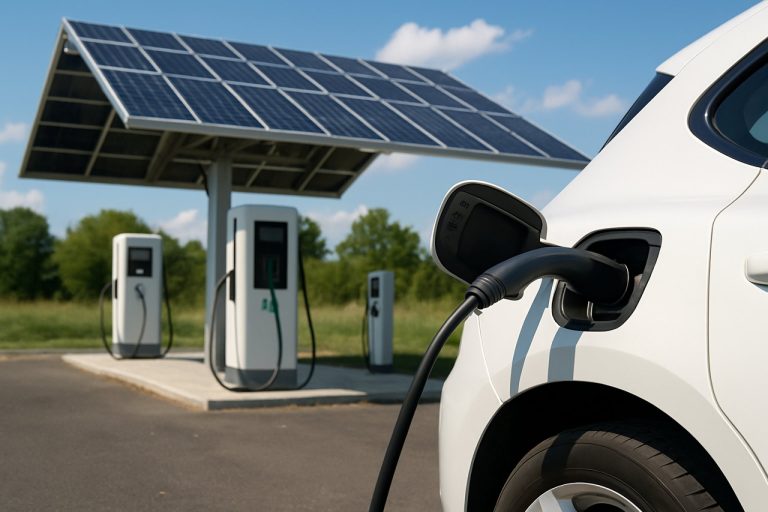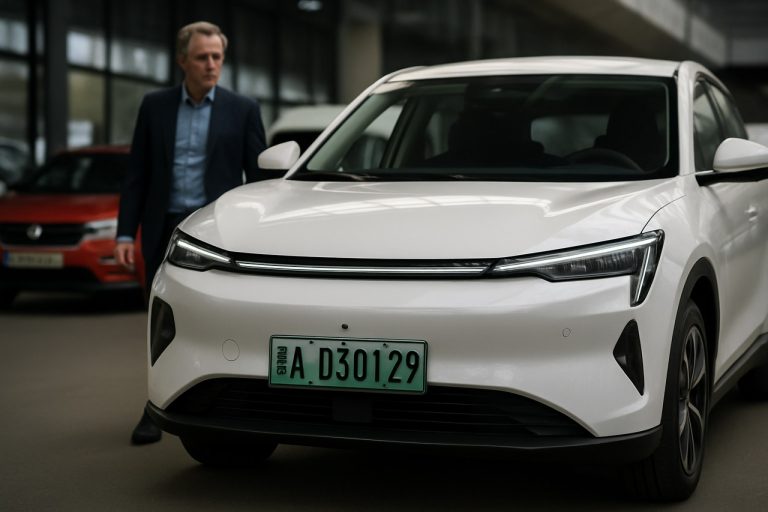
- Electric bike prices in Vietnam have dropped dramatically, now starting at just 12 million VND, making sustainable transportation more accessible.
- VinFast offers modern features like LFP batteries, 5-year warranties, front disc brakes, and water-resistant motors for safety and durability.
- Additional incentives include a 4% universal discount, price-difference refunds for recent buyers via VPoint, and free charging at all V-Green stations nationwide until mid-2026.
- Models like Motio, Evo Neo, Feliz Neo, and Theon S combine affordability with advanced technology, appealing to a wide range of consumers.
- Gig economy drivers with Xanh SM benefit from up to 90% revenue-sharing, supporting a shift to cleaner, more profitable gigs.
- This surge in electric bike adoption is helping reduce urban air pollution and transforming mobility culture in Vietnam.
A cascade of surprise swept through Vietnam’s online communities this week, as the price of electric bikes dropped lower than anyone dared imagine. Motorbike ownership, long a rite of passage in Vietnamese cities, is drifting into new territory—one where sustainability isn’t only a lofty goal but an everyday reality.
Bright banners line VinFast showrooms: high-quality, reputable electric bikes now start at just 12 million VND—less than many traditional gas-fueled models. The bold price drop, unveiled in a wide-reaching initiative, has transformed the electric bike market overnight. Some models, like the popular Motio, dip to record-low prices, while the Evo Neo, Feliz Neo, and the top-tier Theon S offer a combination of affordability and cutting-edge technology unmatched by conventional counterparts.
The shift isn’t just about numbers. VinFast unfurled a web of incentives, offering a 4% universal discount on purchases and peace-of-mind guarantees—models outfitted with robust LFP batteries and warranties that stretch up to 5 years. Front disc brakes and IP67 water-resistant motors promise safety and resilience, even as monsoon rains lash the streets of Hanoi and Ho Chi Minh City.
Those who bought electric bikes after January 2025 aren’t left behind. VinFast’s VPoint refund system, managed through its VinClub app, ensures that loyal customers receive the difference in price—a rare gesture in an industry often more focused on volume than consumer respect.
But the story is bigger than bargains. In crowded cities shrouded with smog, gas-powered two-wheelers bear much of the blame. As policymakers eye tougher emissions standards for urban vehicles, VinFast steps into the void with a mission—to make the green choice not just good for the planet, but easy on the wallet and seamless in daily life.
Hidden in the details are advantages that add up: electric bikes cost less to charge and maintain than gas models. Charging is free at any V-Green station nationwide until mid-2026, adding to the already compelling cost equation. For tech-savvy riders, the Evo Grand edition arrives with not one, but two swappable batteries, letting commuters dash further and faster across sprawling cityscapes.
Meanwhile, the revolution stretches into the gig economy. Drivers partnering with Xanh SM benefit from pioneering revenue-sharing policies, claiming up to 90% of their earnings in the first year—a potential game-changer for delivery and transport workers striving for a better, more sustainable future.
Industry experts note that such forceful action from domestic automakers could reset mobility habits for an entire country. Electric bikes, once a niche product for early adopters, are now rolling into the mainstream. The payoff isn’t just quieter streets and cleaner skies—it’s a vibrant, more resilient Vietnam, racing ahead on the charge toward a green horizon.
Key Takeaway: The electrification of Vietnamese roads is no longer a dream. Affordable, well-equipped electric bikes are reshaping the market and empowering consumers to choose cleaner transport—proving that sustainability and savings can ride together.
Electric Bike Price War: How Vietnam’s EV Revolution Could Change Transportation Forever
# Vietnam’s Electric Bike Price Drop: Everything You Need to Know and What Comes Next
Vietnam’s urban landscape is experiencing a seismic shift as electric bikes become not only attainable, but often cheaper than traditional gas motorbikes. Here’s a comprehensive look at the latest developments, untapped facts, and what savvy consumers and industry watchers need to know—plus actionable tips to ride greener and smarter today.
—
Uncovered Facts & Additional Insights
1. The Rise of VinFast and Vietnamese Electric Mobility
VinFast, backed by conglomerate Vingroup, is now a leading electric vehicle (EV) player in Southeast Asia. The recent reduction of their entry-level electric bike prices to 12 million VND (about $470 USD) undercuts many gasoline-powered competitors and makes EV ownership accessible to millions.
2. Expanding Product Lineup—Features and Tech
– Motio, Evo Neo, Feliz Neo, and Theon S all offer modern features like smartphone integration, digital displays, and anti-theft systems.
– Battery Technology: Most VinFast e-bikes use Lithium Iron Phosphate (LFP) batteries, which are safer, longer-lasting, and less prone to overheating compared to conventional lithium-ion packs.
– IP67-rated Motors: Protection against dust and water immersion, vital for Southeast Asian monsoon climate.
– Dual Battery Options: The Evo Grand, with swappable batteries, nearly doubles urban range—ideal for delivery drivers and commuters alike.
3. Maintenance & Operational Cost Advantages
– Charging Costs: A full charge for most models costs less than 5,000-7,000 VND (~$0.20–$0.28).
– Servicing: Electric bikes require ~30% less maintenance than gas bikes due to fewer moving parts (no oil, filters, or exhaust systems).
– Free Charging: Nationwide V-Green network stations allow no-cost charging until at least mid-2026.
4. Incentives and Customer Care
– VPoint Refund System: Retroactive rebates for post-January 2025 buyers, managed via the VinClub app.
– Warranty: Up to 5 years, above industry norm (usually 1–2 years for e-bikes in the region).
– Insurance Partnerships: VinFast is developing bundled insurance products for theft and accident coverage.
5. Market Trends & Forecasts
– According to Statista and the Vietnam Ministry of Industry and Trade, e-bike sales are projected to grow 21% annually through 2028, far outpacing gas two-wheelers.
– More than 60% of Vietnamese consumers in a 2023 Nielsen survey expressed willingness to switch to EVs if costs aligned with traditional bikes.
– Urban pollution regulations: Policies set for 2026–2028 could further push gasoline two-wheelers out of major city centers.
6. Real-World Applications & Case Studies
– Xanh SM Partnership: Delivery and ride-hailing drivers report up to 50% savings in monthly transportation costs using e-bikes, plus up to 90% revenue retention in the first operational year.
– Educational Institutions: University campuses in Ho Chi Minh and Hanoi are piloting exclusive e-bike parking and charging zones.
7. Limitations & Controversies
– Range Anxiety: Most models offer 70–100 km per charge, but rural users may face charging station scarcity.
– Resale Value: Resale markets for e-bikes are still nascent, affecting long-term investment confidence.
– Grid Sustainability: Vietnam’s electricity mix still relies heavily on coal, diluting some environmental benefits.
– Upfront Payment: Limited credit and installment options for lower-income buyers.
—
Pressing Questions Answered
Are Electric Bikes Truly Cheaper Than Gas Motorbikes in Vietnam?
Yes. When factoring in purchase price, charging (free until 2026), and lower maintenance, electric bikes now cost less overall for average urban users, especially with VinFast’s latest price cuts and incentives.
How Safe Are Electric Bikes in Vietnam’s Rains and Floods?
E-bikes with IP67 water-resistant motors and disc brakes, such as VinFast’s lineup, are designed for Vietnam’s wet climate. Still, users should avoid riding through deep floods to prevent electrical and battery damage.
How Fast and Far Can These E-Bikes Go?
Most VinFast models can reach 45–70 km/h and have a real-world range between 70–100 km per full charge—ample for city commutes.
How Does VinFast Compare to Other E-Bike Brands?
– VinFast: Market leader, robust service and charging network, longest warranty, best after-sales support.
– Yadea, Honda, Pega: Offer budget models but with smaller charging networks and less comprehensive support.
– See also: VinFast for brand info.
—
Pros & Cons Overview
| Pros | Cons |
|——————————————|——————————————|
| Lower TCO (Total Cost of Ownership) | Limited range vs. gas bikes |
| Virtually silent operation | New tech; potential teething issues |
| Instant torque and smooth acceleration | Charging infrastructure still growing |
| Free nation-wide charging until 2026 | Battery disposal needs regulation |
| Longer warranties (up to 5 years) | Limited resale options (for now) |
—
How-To: Smart Steps for First-Time E-Bike Buyers in Vietnam
1. Assess daily commute distance vs. model range.
2. Check charging station map (V-Green) for convenience.
3. Register for VinClub app to track VPoint refunds.
4. Compare warranty terms with competitors.
5. Ask about insurance and theft protection options.
6. Test ride models under urban conditions (rain, hills, traffic).
7. Plan for home charging setup if you lack garage access.
—
Actionable Recommendations & Quick Tips
– Leverage free charging: Make the most of free V-Green charging until mid-2026.
– Claim your VPoint refund: Monitor VinClub app notifications if you’re eligible.
– Optimize for delivery work: Choose models with swappable batteries for nonstop operations.
– Protect your investment: Always lock your e-bike and consider GPS tracking—e-theft has risen with e-bike popularity.
– Spread the word: The more e-bikes in your area, the faster infrastructure and support will grow.
—
Industry Outlook: Expert Opinions
As Vietnam edges toward stronger emissions standards and urban air quality controls, the country may soon emerge as a Southeast Asian leader in two-wheel electrification. Analysts from Deloitte and McKinsey predict that with rising consumer acceptance, innovations in battery tech, and government support, electric bikes could dominate Vietnam’s urban mobility market by 2030.
—
Final Takeaway: Seize the E-Bike Advantage
This historic price drop proves that going electric is finally affordable, reliable, and smart for millions of Vietnamese. Whether you’re a student, office commuter, or gig economy driver, there’s never been a better time to join the e-bike wave—and shape a cleaner, quieter, and more vibrant Vietnam.
—
Ready to ride the future? Check out more at VinFast.



